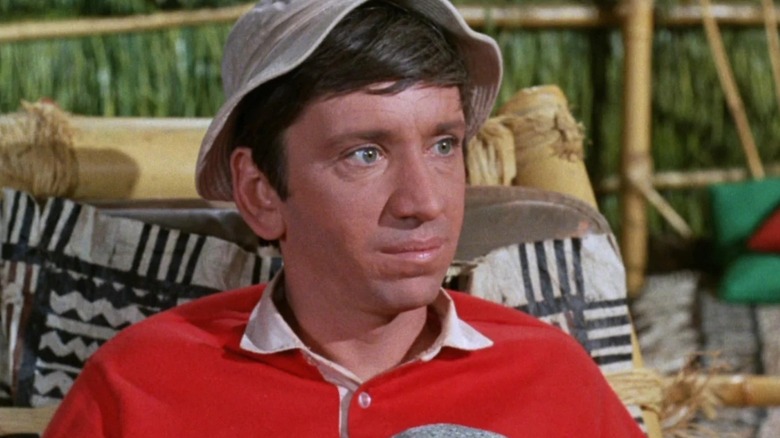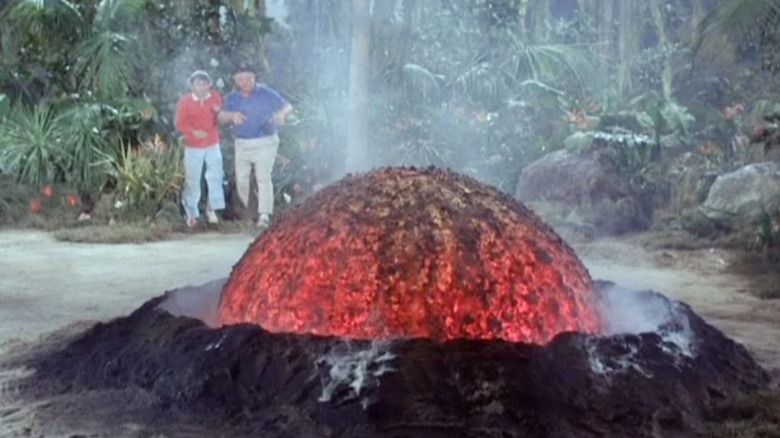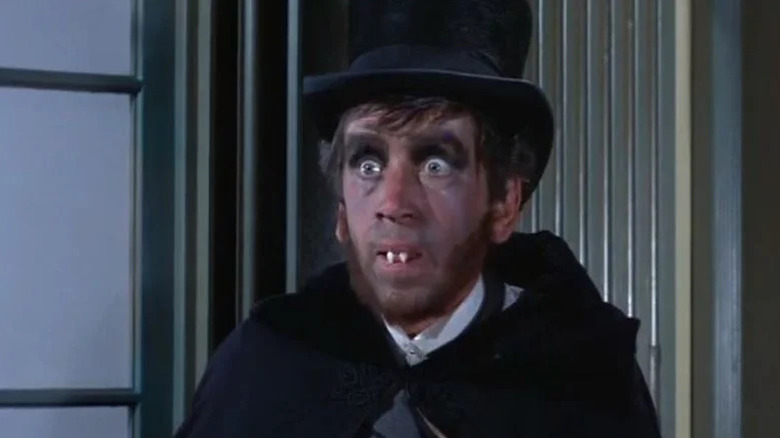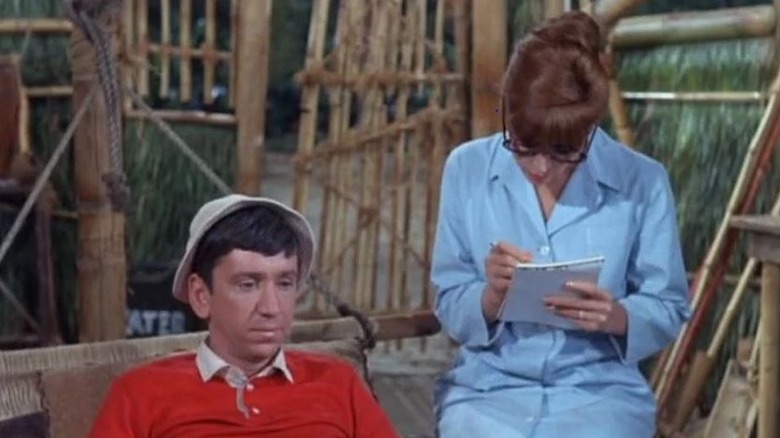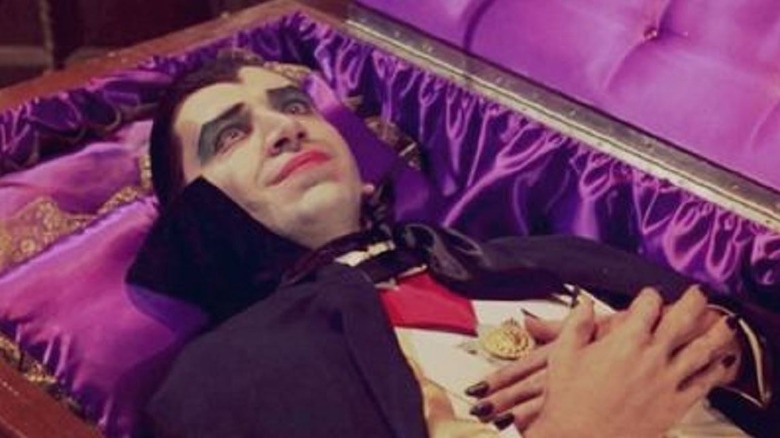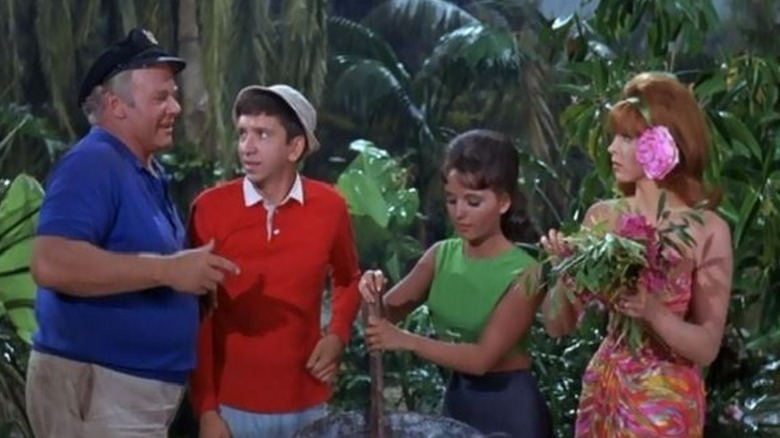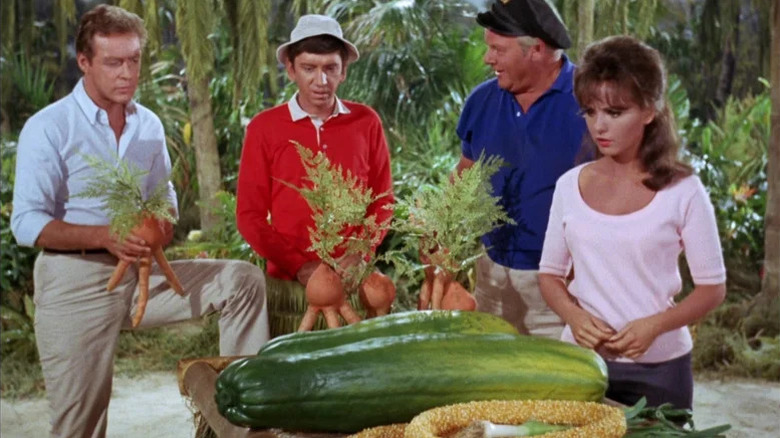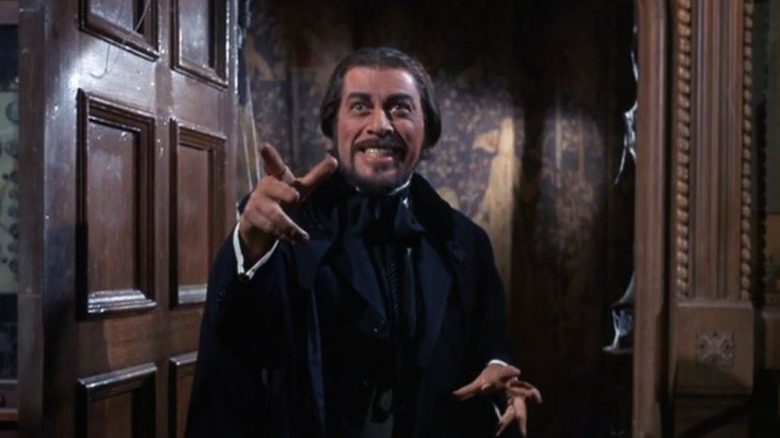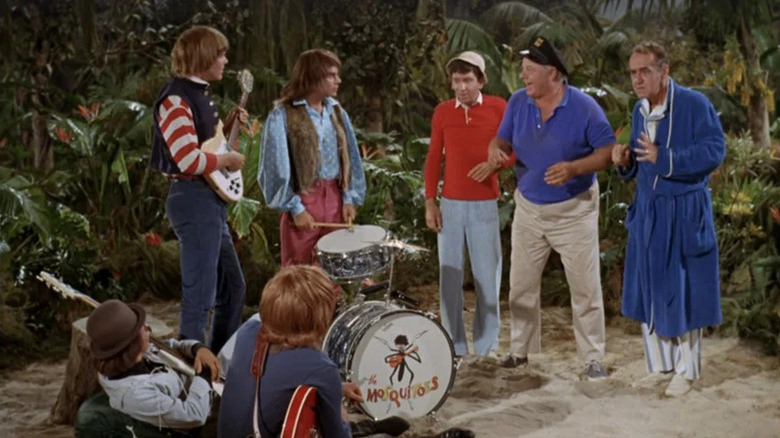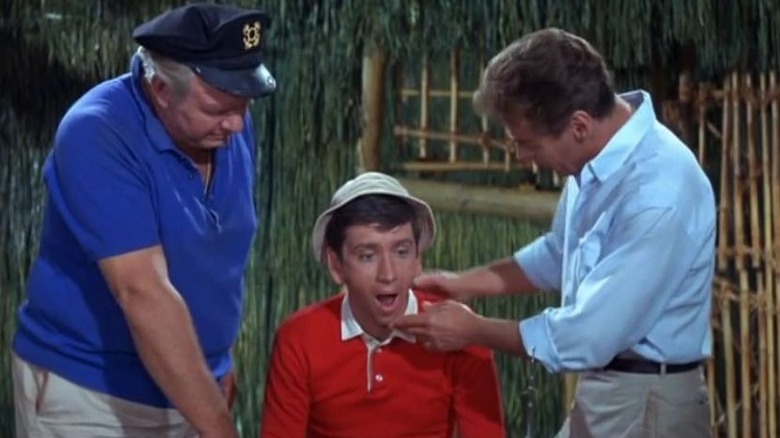The 10 Best Episodes Of Gilligan's Island Ranked
For all its popularity, Sherwood Schwartz's CBS comedy classic "Gilligan's Island" is a very strange waterfowl in the sitcom pond. It combines what's effectively a live-action cartoon with a series of morality plays hidden inside outlandish stories that demand viewers grab disbelief by the neck and hoist it out of their TV room. On top of that, all of this is acted out by characters that were inspired by the seven deadly sins.
From 1964 to 1967, the toil and turmoil of the S.S. Minnow survivors offered viewers a regular dose of Robinson Crusoe antics mixed with a hefty dose of slapstick and a generous spoonful of genuine depth. Despite the series' comparatively short life, this (along with copious reruns) was more than enough to earn it a reputation as one of the best shows of the 1960s.
"Gilligan's Island" ran for three extremely eventful seasons that involved so many hare-brained plans to escape the castaway group's island predicament that it beggars belief. Perhaps because of the show's flexibility, there were also surprisingly few absolute dud episodes during the series' run. As such, selecting the absolute 10 best episodes of the show can be a bit of a dealer's choice, but that's exactly what we're doing today — and these are the "Gilligan's Island" episodes that made the cut.
10. The Producer (season 3, episode 4)
"The Producer" is one of those episodes that many fans will no doubt rank in their Top Three "Gilligan's Island" episodes. For me, it falls short of that — not because it's a bad episode by any stretch of imagination, but because guest star Phil Silvers ("Sergeant Bilko," "It's a Mad, Mad, Mad, Mad World") does such a good job as the haughty film producer Harold Hecuba that parts of the episode are genuinely uncomfortable to watch.
Hollywood bigshot Hecuba is one of the many people who end up on the island by accident, and with fraudulent promises of being able and willing to rescue the castaways, this obnoxious figure soon wraps every member of the main cast around his finger. Ginger Grant (Tina Louise), in particular, is desperate to impress the powerful producer, who mocks her talent despite Ginger being an established in-universe superstar. Despite his demeaning attitude, however, Hecuba is soon happy to vanish in the dead of night with a stolen script that the castaways put together to showcase her acting abilities, leaving them to their own devices.
Silvers is easily one of the best guest stars on "Gilligan's Island," and the scenes where the cast attempts to put together a "Hamlet"-themed musical are great — even (and especially) after Hecuba finds out what they're doing and starts micromanaging. However, in a show that has no problem putting the castaways against genuinely evil spies and nefarious scientists, Hecuba is realistic enough to stand out as the worst villain of them all ... and while an episode that first aired in 1966 can hardly be blamed for it, the far more recent revelations of similarly boisterous and aggressive real-life producer Harvey Weinstein can't help but lend Hecuba's domineering antics a slightly creepy air.
9. Meet the Meteor (season 2, episode 32)
Apart from all the Scooby-Doo villains, government experiments, and mysterious visitors, the "Gilligan's Island" season 2 closer, "Meet the Meteor,"reveals that the castaways' island is an enticing target for falling meteors. Of course, the one that happens to hit the island doesn't cause widespread destruction or even a particularly large crater. However, it does radiate cosmic rays which, as the Professor (Russell Johnson) duly explains, will age the group by 50 years in a mere week if they don't destroy it.
What follows is a "Gilligan's Island" best-of collection of twisted science, dream sequences with elderly castaways shuffling around, and last-minute solutions. There's a lot of "don't try this at home" stuff, here — as Tin Man actor Buddy Ebsen from "The Wizard of Oz" would tell you, it's definitely not the best idea to be covered in lead paint no matter what you think you're shielding yourself from. Still, the happy, sci-fi-tinted anarchy of the episode makes for highly entertaining viewing.
8. And Then There Were None (season 3, episode 13)
Everyone on the island disappears one by one. Gilligan thinks he's developed a split personality who's killing his friends. That's all there really is to "And Then There Were None," but the turmoil "Gilligan's Island" manages to create around the premise is nothing short of amazing.
The disappearance mystery soon gives way to a wayward "Doctor Jekyll and Mr. Hyde" theory by the Professor, which in turn shifts the plot toward Gilligan (Bob Denver) finding more and more reasons to suspect himself. Finally, the absurdity culminates in one of the greatest dream sequences in the show's history, as Gilligan's subconsciousness cooks up a 19th century courtroom scene, complete with period-appropriate costumes and horror make-up.
All along, the viewer has a fairly good idea of what's actually happening. The disappearances occur in a singular spot by the castaways' clothesline, and it doesn't take long for the viewer (let alone some members of the castaway group) to figure out that there's a hidden pit. However, this doesn't stop the show from fully committing to Gilligan's fantasies, so the mystery isn't as much what happened but how Gilligan will finally figure it out instead of indulging in his delusions. The marriage of the mundane and ridiculous is often the "Gilligan's Island" way, but rarely does the show harness both aspects to serve the plot this effectively. It's no wonder that the Agatha Christie-influenced episode was Mary Ann actor Dawn Wells' favorite.
7. Seer Gilligan (season 2, episode 19)
Some shows like to take their sweet time while they introduce the central mystery or MacGuffin, but "Seer Gilligan" is a great example of "Gilligan's Island" doing things its own way. The episode opens by casually revealing that Gilligan is now a telepath (yes, really), and proceeds to work its way to revealing how this happened. Then, and only then, the true pandemonium begins.
When the other castaways find out about the seeds that gave Gilligan his powers, they decide to partake. Suffice to say, everyone goes on to find out the hard way that you do not want to find out what other people secretly think of you when your entire social circle consists of marooned folks who come from drastically different social circles (and, let's face it, whose sanity may or may not be hanging by a thread).
I'm always partial to episodes that depict Gilligan as the most level-headed person of the castaway bunch, and "Seer Gilligan" is a great example of this version of the group dynamics. Gilligan often saves (or ruins) the day by accident, but here, he becomes an active agent of positive change by destroying the source of the seeds and saving the castaways from interpersonal tensions caused by all-access mind reading.
6. Up at Bat (season 3, episode 1)
"Gilligan's Island" season 3 often dabbles with elements of genre fiction, and the season premiere "Up at Bat" sets the tone with its vampire-themed shenanigans. It all begins when Gilligan is doing some work in a cave but is rudely interrupted by a bat that bites him. Multiple unfortunate coincidences then set up a situation where Gilligan becomes convinced that he has transformed into a vampire, and it turns out that poor Gilligan's overactive imagination is all too capable of warping this unlikely event into a situation where multiple other castaways suspect that the hapless first mate has turned into a vampire bat.
"Gilligan's Island" is known to spice things up with liberally-deployed dream sequences, and "Up at Bat" features a particularly nice Dracula parody where Gilligan is the vampire and the Professor and the Skipper (Alan Hale, Jr.) cosplay as vaguely Sherlock Holmes and Dr. Watson-inspired vampire hunters. "Gilligan's Island" is always a show that prefers the gas pedal, but "Up at Bat" is a good example of what the series can do when it decides to ignore the brakes altogether.
5. Not Guilty (season 2, episode 16)
As befits its isolated theme, "Gilligan's Island" plays with whodunnits more than once over the course of its run. For my money, the finest of this bunch is "Not Guilty," the season 2 episode that becomes a literal murder mystery. Unlike other plays on the theme (like "And Then There Were None," which is based on misunderstandings and fantasies), "Not Guilty" introduces an actual murder when the group finds a newspaper that reveals every single castaway is wanted as a suspect for killing a man named Randolph Blake. Chaos and paranoia ensues when multiple characters are tinkering with something extremely suspicious and deadly — props to the Professor's coconut guillotine and Mary Ann and Ginger's poison project, in particular.
The plot thickens when it turns out that everyone knew Blake and disliked him enough to have a motive for the murder. I won't go into details on just how the case is ultimately solved and who is the culprit. This is not for fear of spoiling a decades-old sitcom episode but because its mash-up of traditional murder mystery and the show's patented zaniness is a true sight to behold and should be witnessed with as little knowledge as possible.
4. Pass the Vegetables, Please (season 3, episode 3)
Radioactivity-induced superpowers are the name of the game in "Pass the Vegetables, Please," and the show uses every drop of comedy in this considerable pool of fun by recognizing which characters are the absolute most entertaining recipients for the various powers the episode hands out. Of course the scrawny Gilligan is the go-to guy for absurd feats of strength. Of course the conservative Mrs. Howell (Natalie Schafer) is the correct recipient for outlandish bursts of speed, and obviously the down-to-Earth Mary Ann (Dawn Wells) is a far better choice for late-game super-sight than the all-too-obvious Professor. And yes, of course the whole situation gets resolved in the silliest, most visually amusing way possible.
Apart from the episode's superpower theme, there's much fun to be had during the lead-up to the disaster.Things like missed radioactivity signs, an extremely "Gilligan's Island" approach to agriculture, and the bizarre vegetable crop that pops up overnight are all fun moments, and in general, the episode spends so much time hoisting early red flags that the viewer knows to expect a massive payoff well before the superpowers come into play. "Pass the Vegetables, Please" sets lofty goals and goes on to surpass them, resulting in one of the finest "Gilligan's Island" episodes ever made.
3. The Friendly Physician (season 2, episode 29)
A rare episode where the castaways actually get rescued (temporarily and after a fashion, anyway), "The Friendly Physician" is noteworthy because much of its action takes place on a different island than the show's main locale. The episode revolves around their rescuer: the titular "friendly" physician, who turns out to be the bona fide diabolical scientist Dr. Boris Balinkoff (an excellent mustache-twirler of a guest star turn by character actor Vito Scotti).
The big draw of "The Friendly Physician" is its body-swapping invention, which Dr. Balinkoff uses liberally on the castaways, as well as his ape assistant Igor, who accidentally switches minds with Ginger. This allows the actors to flex their comedic chops by playing each others' characters, which is just as fun as it sounds.
Though the main plot itself is quite endearing and offers some of the best laughs on the entire show, my personal favorite moment in "The Friendly Physician" is a late-game exchange during which the series once again sabotages the castaways' latest opportunity to escape their limbo. As Gilligan and the Skipper assess Dr. Balinkoff's boat, it is the former and not the latter who immediately declares that it's far from seaworthy — which soon proves to be the case when the boat sinks. Childish though he may be, Gilligan is a Navy veteran and a perfectly capable seafarer, and it's always nice to see the show actually remember that even this cartoon character made flesh can function as a human being and has his own areas of expertise.
2. Don't Bug the Mosquitoes (season 2, episode 12)
Fittingly for its absurdist nature, "Gilligan's Island" thrives on guest stars that pop up on the not-so-deserted tropical island at such regular intervals that you'd be forgiven for thinking that the mainland is within spitting distance. Rarely is the show's gleeful abandonment of logistics and logic more obvious than in "Don't Bug the Mosquitoes," which ignores the narrative conventions of the castaway theme in favor of riffing on Beatlemania.
When rock group The Mosquitoes (played by Les Brown Jr., Kirby Johnson, Ed Wade, and George Patterson) use the island as a temporary escape from the day-to-day hassle of being musical celebrities, the mega-star quartet inevitably encounters the castaways. The grouchier members of the group are annoyed by the racket that the band makes, while others are enamored with their presence. As is so often the case with "Gilligan's Island," everything escalates above and beyond what the viewer might expect ... and before long, the castaways themselves are forming musical groups as part of their plot to get the Mosquitoes to leave the island and rescue them while they're at it. Suffice to say, one half of that plan is a grand success.
"Don't Bug the Mosquitoes" takes everything that's good in the show and throws it in a blender with the most prevalent pop culture phenomenon of the time the episode originally ran (December 1965, not long after The Beatles started making waves in the U.S.). This created a solid foundation for a classic "Gilligan's Island" story, and the fact that it's simply a very good sitcom episode doesn't exactly hurt its appeal.
1. Hi-Fi Gilligan (season 2, episode 10)
After an accidental jaw injury, Gilligan finds out that his mouth has turned into a radio. This is all that "Gilligan's Island" needs to deliver an all-timer of an episode. As a dangerous storm is about to hit the island and everyone is preparing to hide in a cave until it passes, the castaways develop their own agendas for Gilligan's oral radio receiver, which is the source of endless fun to some and incalculable frustration to others.
This, in itself, isn't what makes "Hi-Fi Gilligan" such a great episode. The thing that raises it above the comparative rabble is how it puts Gilligan's underlying selflessness and heroic qualities on full display. As mentioned before, this petty and childish character is also capable of truly great things. As an example of this hidden heroic nature, Gilligan's decision to effectively pick himself as the person who's left out of the castaways' overcrowded shelter becomes one of the show's most touching moments, offering a glimpse of how strong the castaways can be when they decide to stand with each other. This lesson in unity, as creator Sherwood Schwartz has explained, is the series' most important message. The episode promptly rewards the castaways' decision to leave the shelter together, as the storm destroys the cave immediately after they exit it to stand as one with Gilligan.
Even when played for laughs, it's unequivocally touching stuff. Combine it with the surprisingly effective mouth radio gag and strong writing and performances throughout, and "Hi-Fi Gilligan" is as close to a perfect episode of "Gilligan's Island" as you can possibly get.
